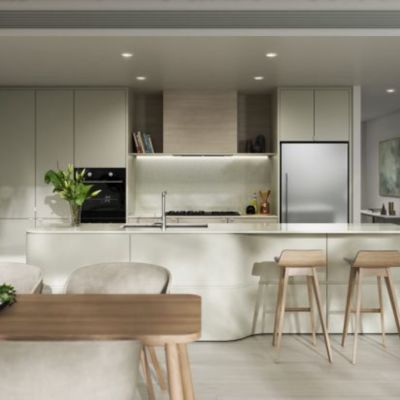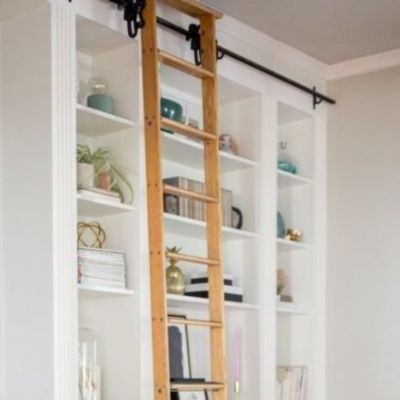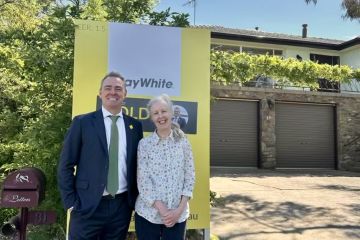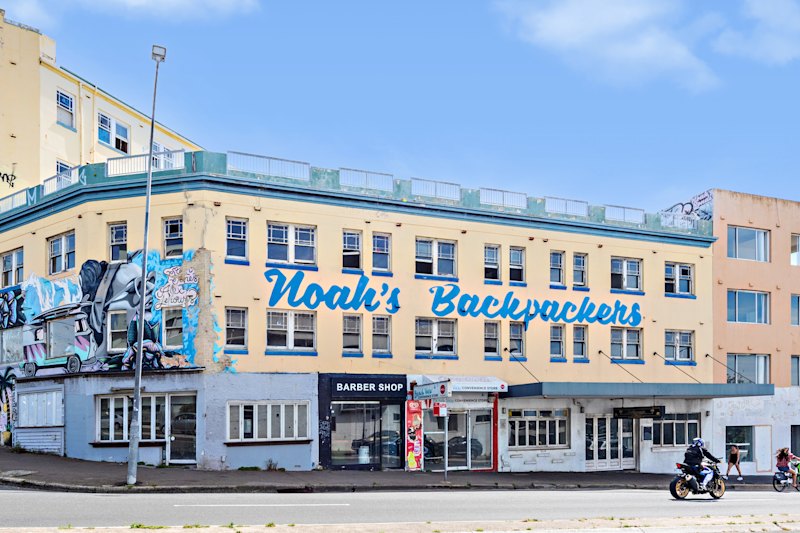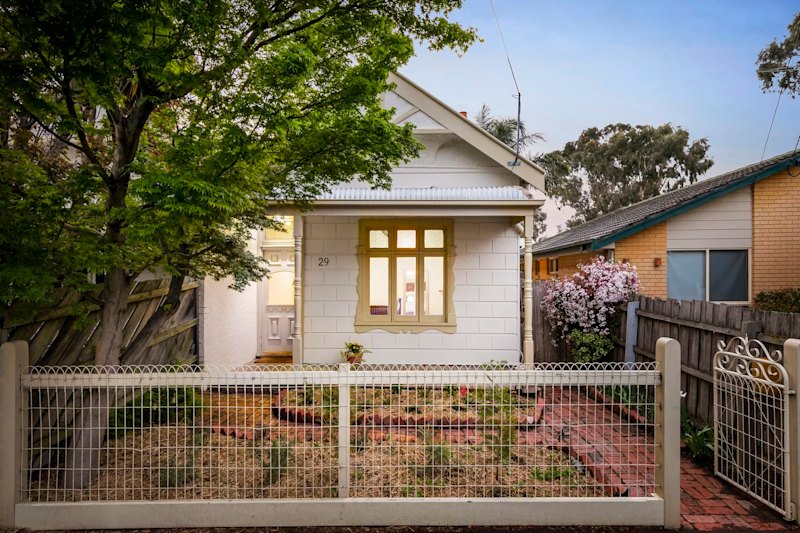New boutique apartments Loftus Lane to unlock laneways in Circular Quay

In matters of real estate, it can be tempting to assume that bigger is always better. Tempting, perhaps. But not entirely accurate.
Justin Brown, the chairman of residential projects for CBRE, says buyers are not necessarily swayed by grand scale, particularly in apartment buildings.
“Not everyone wants to live 40 storeys high,” Brown says. “A section of the marketplace is looking for a more intimate offering. They might like to know the other owners in the building. The operating costs are also a lot lower in smaller buildings.”
In Sydney’s central business district, the supply of luxury apartments can’t keep up with demand, especially when harbour views are on offer.
It took just three-and-a-half hours for the first 159 apartments at Barangaroo to sell out in 2013. Late last year, all 104 apartments in the 20-storey Opera Residences at Circular Quay were snapped up on the launch day. Developers are pushing more high-rise towers through the planning process.
Though the appetite for great heights in the heart of Sydney remains unquenched, something entirely different is expected to pique the interest of buyers next month.
Loftus Lane is a new project offering a style of property rarely seen in the inner city: boutique apartment living in low-rise buildings just 200 metres from Circular Quay.
The development, comprising 106 apartments in three mixed-use buildings, is part of the new Quay Quarter Sydney precinct from developer AMP Capital.
Due for completion by early 2021, the 11,000-square-metre precinct will be home to the $1 billion Quay Quarter tower, a dramatically rebuilt 49-storey commercial building at 50 Bridge Street designed by Danish firm 3XN.
Loftus Lane, bordered by Loftus Street on one side and Young Street on the other, is intended to bring more of a village-like feel to the inner-city blocks.
Two of the apartment buildings are 13 storeys; the other just nine storeys. None has more than 50 units.
Brown describes the boutique nature of the new homes in one of Sydney’s most recognisable locations as unprecedented.
“The scale of the buildings is more like what you would expect to find in Paddington or Surry Hills, versus a large city tower,” he says.
About one-third of the apartments will have harbour views. Others overlook Macquarie Place Park, the Royal Botanic Garden and Jessie Street Gardens. A network of laneways will be transformed to deliver a buzzy street-level experience that wouldn’t seem out of place in Melbourne.
The heritage-listed 1860s wool-store Hinchcliff House will be converted into a three-storey retail and dining venue, including high-end fashion, hole-in-the-wall cafes and basement bars.
Gallipoli Memorial Club is set to receive a refurbishment, while there is talk of closing off through-traffic along Loftus Street.
Murray Middleton, head of development at AMP Capital, says the new residential buildings are modern but respectful of their urban context and heritage surrounds.
“We knew that we had a special site and that we had to do it justice, to create a precinct that sits in harmony with the streetscape, rather than appearing overnight,” Middleton says.
“Some buildings are retained and enhanced, whilst others are replaced and reimagined. The outcome will be a diverse and unique corner of the city that will evolve to become a much-loved home, space and place.”
The first two buildings to hit the market are 8 Loftus Street and 18 Loftus Street.
 Loftus Lane was planned with the aim of fitting harmoniously in with its surrounds.
Loftus Lane was planned with the aim of fitting harmoniously in with its surrounds.Photo: Supplied
Melbourne studio MAKE Architecture designed 8 Loftus Street – the firm’s first multi-residential project. Director Mel Bright says the building is heavily influenced by the practice’s work creating bespoke freestanding houses.
“Everything we do comes from that,” Bright says. “These apartments are a place you can nestle in, with a cosiness but in a refined contemporary way. You get warmth through using natural materials – real materials that last.”
 Artist’s impression of the Young Street section of the Loftus Lane project, due for completion in 2021.
Artist’s impression of the Young Street section of the Loftus Lane project, due for completion in 2021.Photo: Supplied
The exterior of the nine-storey building takes its cues from neighbourhood’s heritage buildings, with brick elements that appear to shift as they rise. Perforated bronze screens offer privacy and shade. A vertical garden runs through the building.
Elegant in white masonry, 18 Loftus Street from Sydney architecture and interior design studio Silvester Fuller features a series of balconies and terraced rooftops that step inwards as the 13-storey building rises. The interiors are inspired by the concept of improving wellness. In the “sleep zone”, light can be blocked off completely, while acoustic absorption encourages rest.
A sales launch date is yet to be announced for the third building, 15 Young Street, designed by SJB.
AMP Capital describes the development of Loftus Lane and Quay Quarter as an important part of the transformation of Circular Quay, which will also include upgraded ferry wharves, the new light rail and six-star hotels in historic buildings on Bridge Street. Though the influx of residential developments around Circular Quay has been gathering pace since zoning changes in the 1980s, in many respects the desire to make a home in the heart of the city is nothing new.
 They may not be high-rise, but Loftus Lane apartments still secure coveted harbour views.
They may not be high-rise, but Loftus Lane apartments still secure coveted harbour views.Photo: Supplied
The director of strategy and engagement at Sydney Living Museums, Dr Caroline Butler-Bowdon, says central Sydney has a long history of apartment living. Indeed, Australia’s first apartments were built near Circular Quay in 1900. That initial wave of city flat construction reached a pinnacle with the opening of the fashionable Astor building on Macquarie Street in 1923.
“In some ways, today’s city residential renaissance probably isn’t greatly different to what was happening 100 years ago when the first apartments were built,” Butler-Bowdon says. “People work demanding jobs. They want to live in close proximity to work but they also find the incredible amenity that the city offers – with the harbour, the walkability, the cultural offerings, restaurants and the greatest opera house in the world – extremely attractive.”
What has changed, in her view, is the range of people willing to call the city home. Instead of mainly professional singles, affluent empty-nesters, couples without children and Millennial families are moving in, inspired in part by their experience of big-city living overseas.
“City-living has regained its glamorous image but among a wider social milieu,” Butler-Bowdon says. “We wouldn’t have seen that 20 or 30 years ago.”
Sales agent CBRE can be reached on 1800 316 505.
Search for new homes near Sydney CBD by downloading the Domain app.
We recommend
States
Capital Cities
Capital Cities - Rentals
Popular Areas
Allhomes
More
